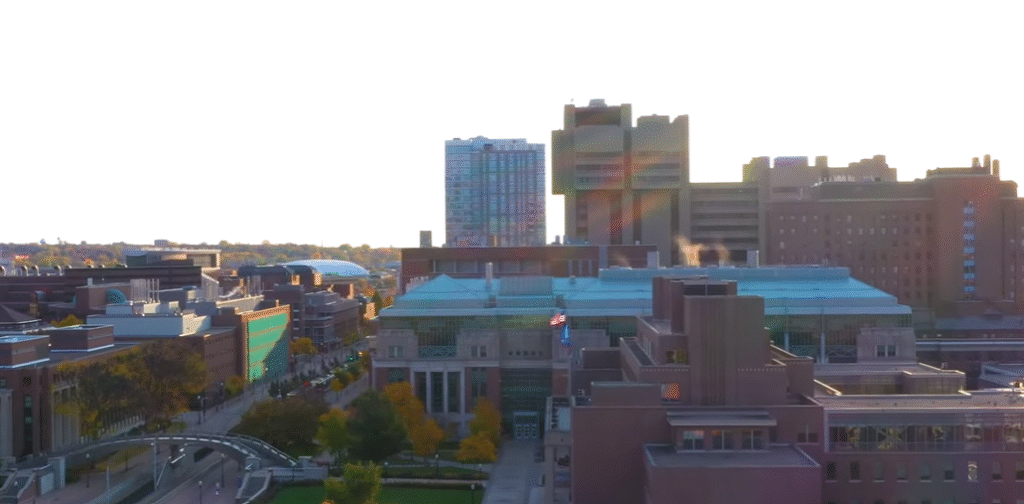The size, importance, and silent lesson about digital responsibility of the University of Minnesota’s class action lawsuit settlement have garnered a lot of attention. The $5 million resolution was more than just a financial decision; it was a symbol of accountability and a shared understanding that data is more than just numbers on a server; it is entwined with legacy, trust, and personal identity.
A 2021 cybersecurity breach that exposed decades’ worth of data stored in the University’s Legacy Data Warehouse gave rise to the case. Originally intended to centralize academic and administrative records, the system became vulnerable when hackers were able to access private information. According to reports, contact information, academic records, names, and Social Security numbers were made public. The breach was extremely personal for those impacted, in addition to being technically complex.
The university, which is frequently seen as a representation of intellectual prowess, was confronted with concerns regarding delayed disclosure and digital oversight. The plaintiffs contended that the organization could have communicated more quickly after the breach happened and put in place more robust cybersecurity procedures. They claimed that the delay prevented them from protecting their identities and money. Alumni and staff members’ silent annoyance swiftly developed into a unified legal voice.
University of Minnesota – Case Information
| Category | Details |
|---|---|
| Case Name | In re: Regents of the University of Minnesota Data Litigation |
| Court | Fourth Judicial District Court, State of Minnesota |
| Settlement Amount | $5 million |
| Nature of Case | Data breach class action lawsuit |
| Settlement Approval Date | January 28, 2026 (Final Hearing) |
| Affected Period | 1989 to August 10, 2021 |
| Estimated Payment | $30 per claimant or 24 months of dark web monitoring |
| Total Class Members | Over 45,000 students, employees, and affiliates |
| Claims Deadline | December 24, 2025 |
| Reference | UofMDataSettlement.com |

Despite insisting it had done nothing wrong, the University of Minnesota ultimately consented to a $5 million settlement. Even though the settlement fund was small in comparison to corporate data breach settlements, it was incredibly successful in establishing a standard for accountability in the public education industry. The $30 payout or the two-year dark web monitoring option is not only restitution but also acknowledgement of the betrayed trust for thousands of impacted people.
A remarkable group of law firms, including Gustafson Gluek PLLC and Lockridge Grindal Nauen PLLP, joined the case and diligently and precisely represented the plaintiffs. Beyond just helping the university recover financially, they also wanted to encourage significantly better cybersecurity and open governance. Their initiatives supported the more general belief that educational institutions need to change to become guardians of both intellectual development and digital identity.
The defense focused on context for the University, which was represented by Orrick Herrington & Sutcliffe LLP. They noted that the hack happened at a time when cyberattacks against colleges nationwide have increased dramatically. Similar incidents occurred at a number of academic institutions, ranging from Stanford to Michigan State, indicating a systemic flaw rather than individual carelessness. But this argument also emphasized how important it is for universities to fortify their digital foundations in the same way that they do their academic reputations.
It was evident that the University of Minnesota’s predicament was a part of a broader trend that was changing higher education by the time the settlement was approved in early 2026. A lot of similarities exist between the increase in cyberattacks on academic networks and the corporate data breach epidemic that compelled banks and retailers to modernize their data systems years ago. Universities that have traditionally prioritized open communication and accessibility are now under pressure to reevaluate how to strike a balance between protection and transparency.
Because it brought together the emotional burden of trust with the vulnerabilities of technology, the story struck a particularly deep chord. Many alumni said that their disappointment stemmed from the feeling that a beloved institution had failed to protect something very personal, rather than the actual lost data. Former students captured the symbolic and real-world repercussions of digital complacency when they likened the breach to “a library leaving its doors open overnight” in letters, forums, and interviews.
Nevertheless, the settlement has a forward-thinking attitude. The University has pledged to carry out frequent cybersecurity audits, reduce needless data retention, and implement stronger encryption techniques as part of the resolution. Even though they are technical, these actions are especially helpful in regaining public trust and making sure that future employees and students feel safe. The changes represent a shift from reactive to proactive stewardship.
The impact is not limited to Minnesota. Universities, both public and private, are reevaluating their cybersecurity budgets and procedures nationwide. According to legal experts, the UMN settlement may serve as a model for similar class actions in the future, especially those involving legacy data systems that hold decades’ worth of personal data. Institutions are discovering that in order to stay safe, digital archives need to be updated and monitored constantly, just like physical vaults.

